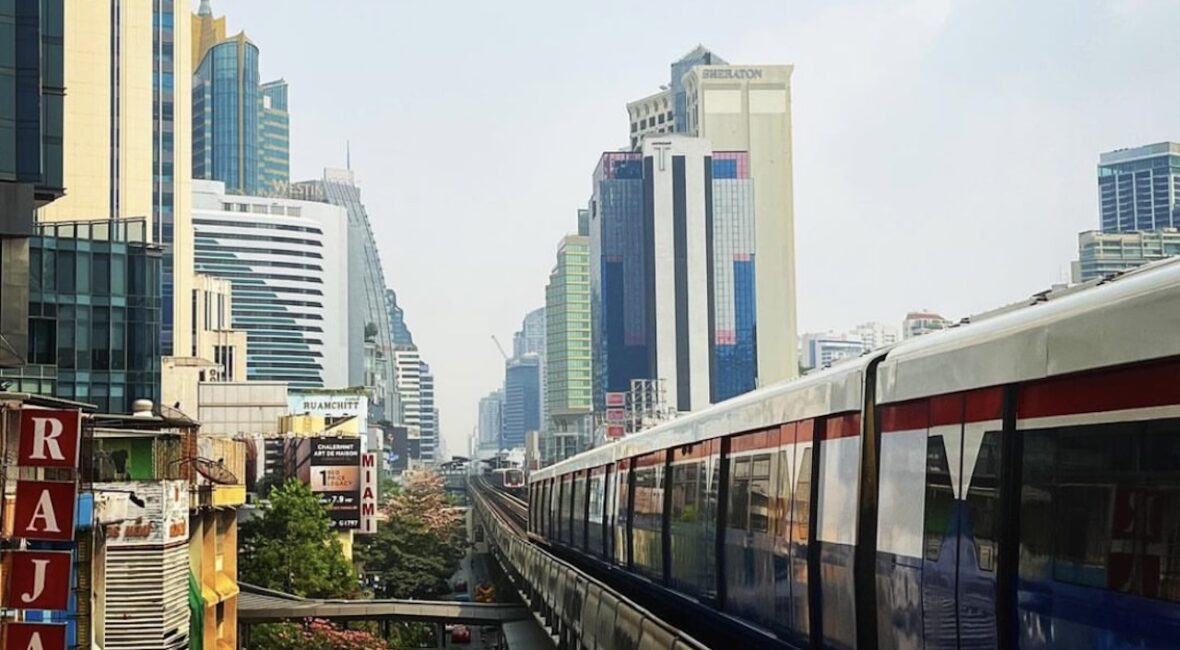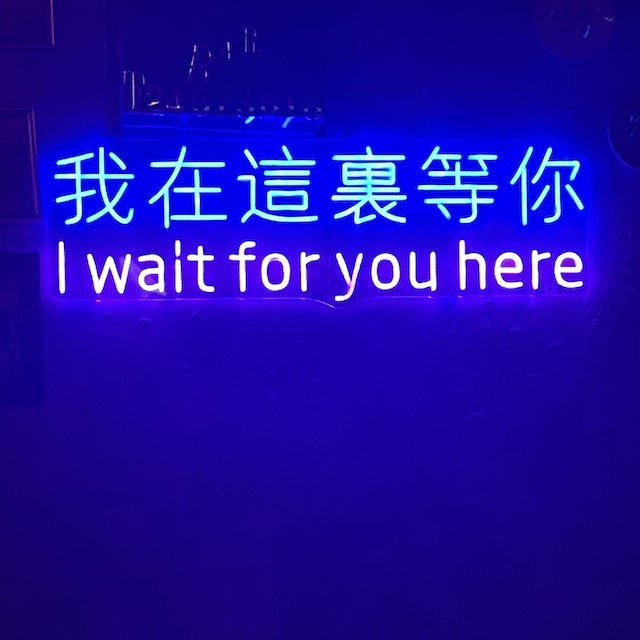It is not enough to say Bangkok Transit is fast and efficient. Public transit here might be the best in the world, at least for a city of this size. It is extremely fast and easy to use, but even the easiest system has a bit of a learning curve when you are arriving in a new country. This post will take you step by step through the basics of riding the trains, with what to expect at each point in the journey.
If you’re looking for the lowest airfares to Bangkok bookmark this post to help you get into town when you arrive.

Where’s the Money? This site may contain affiliate links. Many travel sites include such links to earn a commission at no cost to readers.
Airport Rail Link
For most visitors, their first trip will be on the airport rail link. You may hear the system or stations referred to as “railway” stations but this is not a line for extended travel, it’s an elevated commuter train that looks exactly like the BTS Skytrain. You can show up at the airport station anytime between 6:00 am and midnight and easily buy a ticket from a vending machine. It is worth noting that you should already have acquired at least a little cash at the airport. The machines accept mobile payments by QR code. This feature only works for locals and your phone will likely not be compatible. After paying the small fare, you’ll receive a token with an RFID chip inside. Scan it on the pad on the turnstile for entry.
If there’s a weakness in Bangkok’s transit system it is the shortage of connecting stations between lines. Most visitors will want to take the Airport Rail Link to Phaya Thai Station, which is the connection with the BTS Skytrain serving all hotels along the Sukhumvit Road corridor. Don’t make the mistake of just picking the closest station to your hotel and getting off there. Traffic is always heavy and walking in the heat while toting luggage is no fun at all. It will pay to be as close to your hotel as possible when your feet hit the ground.

BTS Skytrain
At Phaya Thai most visitors will want to drop their token to exit and follow the signs to change platforms to the BTS Skytrain.

The vending machines for the BTS will be easy to find, but most of them do not take bills. If you haven’t got sufficient coins you will need to seek out one of the few with a bill collector attached and pay another small fare to your final destination. I would recommend choosing a hotel near Asok station, which is the main interchange point with the MRT underground subway. This intersection is also home to the very popular Terminal 21 shopping mall and the nightlife and red light street Soi Cowboy.


The machine will give you a card and any change that is due. The card works similarly to the token. Scan it on the turnstile for entry and inserted into the turnstile at the destination station.

Inside the Turnstiles
After passing the turnstile, you will want to pause and check the vertical banner with the diagram of the line. This will let you know which side of the platform to ascend the stairs. It can be easy to forget which direction you are intending to go and the trains run on the left, counterintuitive for Americans. If you see your intended station in color and not grey, you are on the correct side and should use the nearest stairs.
NOTE: Each station has an alphanumeric number as well as a name. Letters indicate the direction of that segment of the line (North, East, South) and the numbers count up from the Central Station. Asok is 4 Stations East of Central. You may find it easier to remember the numbers than the names.


Getting Around Quickly
Bangkok Transit runs on very quick headways so you will not be waiting long at the station. The trip will only take a few minutes and stations will be announced in English as the train moves. You should count on the train being very crowded at any time. Especially in this very central area where commuters and tourists are mixing. When you reach Asok station step off and insert your card in the turnstile to exit. It is important to take note of which direction you want to walk, and to exit the station in the right direction. If not you will need to backtrack or cross some very busy roads unnecessarily.
If your hotel is near enough to Asok to walk, you will have a very convenient stay. Otherwise it will be easy to find a taxi or tuk tuk to your hotel. I have not been using rideshare at all because there is always a tuk tuk within sight. There is a permanent taxi stand directly in front of Terminal 21 mall.

MRT Subway
Let’s assume that you have checked into a nearby hotel like the Red Planet Bangkok Asoke ($25-35 on Expedia) and now you want to go see Wat Arun and the National Museum which is near the riverfront. You will need to walk to the nearby Sukhumvit MRT station, which can be accomplished by using the skytrain platform to cross the intersection.
It can be a bit tough to remember that these are separate Bangkok Transit stations with separate names. You may find yourself at some random MRT station trying to get back to ‘Asok’ which is not on the MRT system map. If you are on the subway it is ‘Sukhumvit’ that you want.

Paying on MRT
The same ticket machines are present in the MRT Subway system, and they dispense the same tokens as the Airport Rail Link. By now you have bought a couple of fares and should be getting familiar with the process. But there is good news. In the MRT subway system the turnstiles accept Visa cards as payment. Paying by card allows you to skip the machines entirely and tap your card directly on the turnstile to purchase a fare. Your total is calculated automatically when you tap to exit at your destination. If you need to study the map it can be done inside the turnstiles, away from the lines of commuters.


For this hypothetical we are going to go to Sanam Chai Station and swipe the same credit card on the turnstile to leave. If you swipe and are met with a big red X and some Thai language, don’t worry. Just tap your card again or try a different turnstile. This happens sometimes but is not a big deal at all.
Take Me To The River
From Sanam Chai it is a short walk to the Rajinee Pier where you can take a boat upriver to Phra Chan Pier. The boat costs 16 Baht and it is an honor system to pay. Someone walks around on the vessel shaking a can of coins where you are supposed to deposit your fare. I did not see any enforcement but a sign indicated that the penalty for not paying the fare is… being made to pay the fare. No fine or anything like that.


It’s notable that there are ferries operating from these piers as well, which just cross the river directly from station to station. The transit boat crosses the river as well, as there are stations on both banks. If you’re unsure about which boarding pier is the correct one there will be someone at the terminal to help you. It’s also notable that other boats operate along the canals in Bangkok. These are popular with local commuters. They are a bit outside the scope of this post but if you are staying closer to the canal than to the train (don’t) you may find them very helpful.
Bangkok Transit- Ready to Ride?
You would do the same course in reverse to get back to Asok, and by the time you have completed all the steps in this post you should be an expert in Bangkok transit. The last and perhaps most important thing to remember is that the trains don’t run past midnight. That’s a bit odd for a city with so much nightlife. Around 11:00 the system will be making announcements about the final connections of the day. If you are planning to be out after midnight you should definitely plan to take a taxi or Grab back to your hotel.







